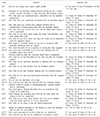1. Coemans M, Süsal C, Döhler B, Anglicheau D, Giral M, Bestard O, et al. Analyses of the short- and long-term graft survival after kidney transplantation in Europe between 1986 and 2015. Kidney Int. 2018; 94:964–973.

2. Wiebe C, Gibson IW, Blydt-Hansen TD, Karpinski M, Ho J, Storsley LJ, et al. Evolution and clinical pathologic correlations of de novo donor-specific HLA antibody post kidney transplant. Am J Transplant. 2012; 12:1157–1167.

3. Wiebe C, Gibson IW, Blydt-Hansen TD, Pochinco D, Birk PE, Ho J, et al. Rates and determinants of progression to graft failure in kidney allograft recipients with de novo donor-specific antibody. Am J Transplant. 2015; 15:2921–2930.

4. Kuypers DR, Peeters PC, Sennesael JJ, Kianda MN, Vrijens B, Kristanto P, et al. Improved adherence to tacrolimus once-daily formulation in renal recipients: a randomized controlled trial using electronic monitoring. Transplantation. 2013; 95:333–340.

5. Testa MA, Simonson DC. Assessment of quality-of-life outcomes. N Engl J Med. 1996; 334:835–840.

6. Fiebiger W, Mitterbauer C, Oberbauer R. Health-related quality of life outcomes after kidney transplantation. Health Qual Life Outcomes. 2004; 2:2.
7. Finkelstein FO, Wuerth D, Finkelstein SH. Health related quality of life and the CKD patient: challenges for the nephrology community. Kidney Int. 2009; 76:946–952.

8. Chisholm-Burns M, Pinsky B, Parker G, Johnson P, Arcona S, Buzinec P, et al. Factors related to immunosuppressant medication adherence in renal transplant recipients. Clin Transplant. 2012; 26:706–713.

9. Sabbatini M, Garofalo G, Borrelli S, Vitale S, Torino M, Capone D, et al. Efficacy of a reduced pill burden on therapeutic adherence to calcineurin inhibitors in renal transplant recipients: an observational study. Patient Prefer Adherence. 2014; 8:73–81.

10. Shabany Hamedan M, Mohamad Aliha J. Relationship between immunosuppressive medications adherence and quality of life and some patient factors in renal transplant patients in Iran. Glob J Health Sci. 2014; 6:205–212.

11. Scheel JF, Schieber K, Reber S, Stoessel L, Waldmann E, Jank S, et al. Psychosocial variables associated with immunosuppressive medication non-adherence after renal transplantation. Front Psychiatry. 2018; 9:23.

12. Laupacis A, Pus N, Muirhead N, Wong C, Ferguson B, Keown P. Disease-specific questionnaire for patients with a renal transplant. Nephron. 1993; 64:226–231.

13. Laupacis A, Muirhead N, Keown P, Wong C. A disease-specific questionnaire for assessing quality of life in patients on hemodialysis. Nephron. 1992; 60:302–306.

14. Hays RD, Kallich JD, Mapes DL, Coons SJ, Carter WB. Development of the kidney disease quality of life (KDQOL) instrument. Qual Life Res. 1994; 3:329–338.

15. Franke GH, Reimer J, Kohnle M, Luetkes P, Maehner N, Heemann U. Quality of life in end-stage renal disease patients after successful kidney transplantation: development of the ESRD symptom checklist - transplantation module. Nephron. 1999; 83:31–39.

16. Guillemin F, Bombardier C, Beaton D. Cross-cultural adaptation of health-related quality of life measures: literature review and proposed guidelines. J Clin Epidemiol. 1993; 46:1417–1432.

17. Beaton DE, Bombardier C, Guillemin F, Ferraz MB. Guidelines for the process of cross-cultural adaptation of self-report measures. Spine (Phila Pa 1976). 2000; 25:3186–3191.

18. Reichenheim ME, Moraes CL. Operationalizing the cross-cultural adaptation of epidemiological measurement instruments. Rev Saude Publica. 2007; 41:665–673.
19. Braun V, Clarke V. Using thematic analysis in psychology. Qual Res Psychol. 2006; 3:77–101.

20. Carmines EG, Zeller RA. Reliability and validity assessment. Thousand Oaks, CA: SAGE Publications;1979.
21. Cronbach LJ. Coefficient alpha and the internal structure of tests. Psychometrika. 1951; 16:297–334.

22. Streiner DL, Norman GR, Cairney J. Health measurement scales: a practical guide to their development and use. New York, NY: Oxford University Press;2015.
23. Park HJ, Kim S, Yong JS, Han SS, Yang DH, Meguro M, et al. Reliability and validity of the Korean version of Kidney Disease Quality of Life instrument (KDQOLSF). Tohoku J Exp Med. 2007; 211:321–329.

24. Hays RD, Kallich J, Mapes D, Coons S, Amin N, Carter WB, et al. Kidney Disease Quality of Life Short Form (KDQOL-SFTM), Version 1.3 [Internet]. Santa Monica, CA: RAND Corporation;1997. cited 2019 Dec 20. Available from:
https://www.rand.org/pubs/papers/P7994.html.
25. Rebollo P, Ortega F, Ortega T, Valdés C, García-Mendoza M, Gómez E. Spanish validation of the “kidney transplant questionnaire”: a useful instrument for assessing health related quality of life in kidney transplant patients. Health Qual Life Outcomes. 2003; 1:56.
26. Wang WL, Lee HL, Fetzer SJ. Challenges and strategies of instrument translation. West J Nurs Res. 2006; 28:310–321.

27. Rebafka A. Medication adherence after renal transplantation-a review of the literature. J Ren Care. 2016; 42:239–256.

28. Morisky DE, Ang A, Krousel-Wood M, Ward HJ. Predictive validity of a medication adherence measure in an outpatient setting. J Clin Hypertens (Greenwich). 2008; 10:348–354.

29. Mouelhi Y, Jouve E, Alessandrini M, Pedinielli N, Moal V, Meurette A, et al. Factors associated with healthrelated quality of life in kidney transplant recipients in France. BMC Nephrol. 2018; 19:99.





 PDF
PDF ePub
ePub Citation
Citation Print
Print









 XML Download
XML Download